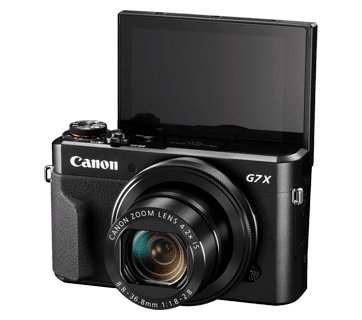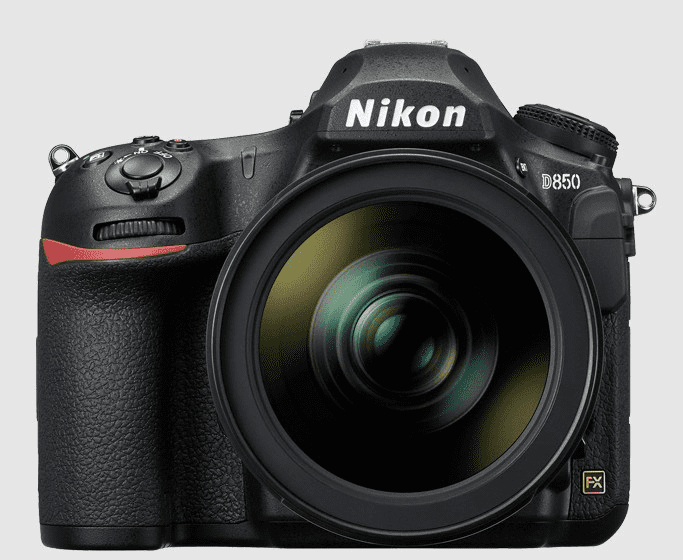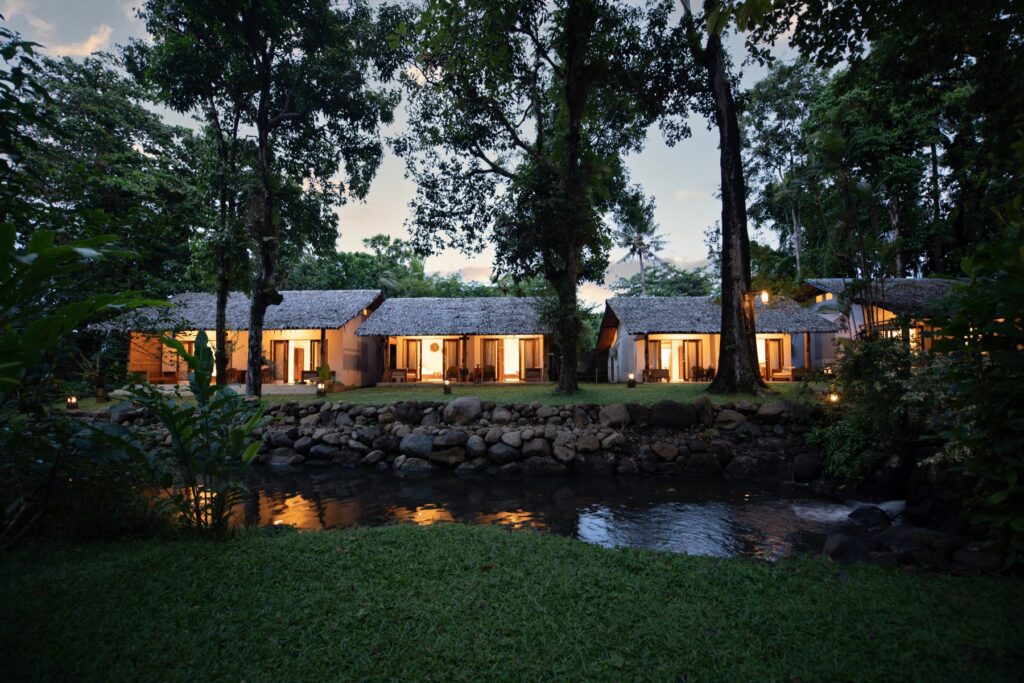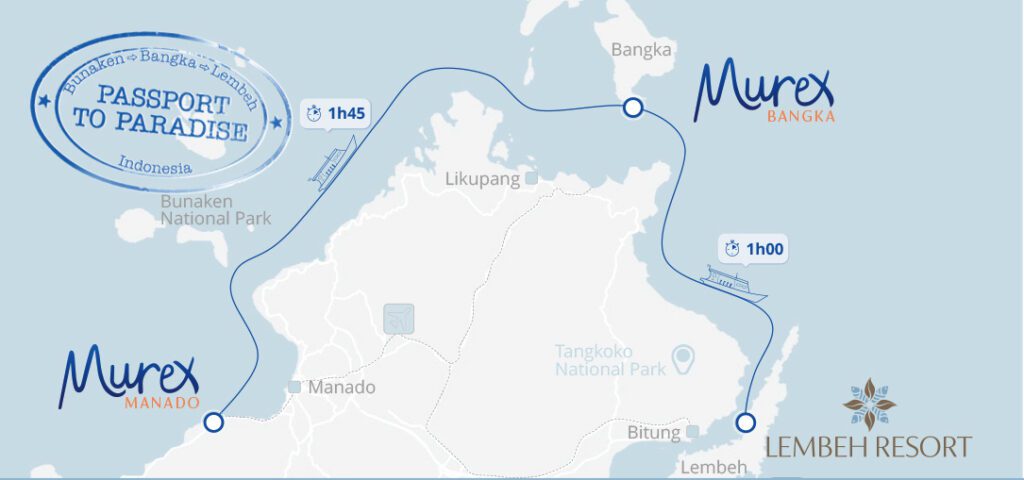Underwater Camera Recommendations & Tips for Marine Enthusiasts
|December 15, 2023
Are you a keen underwater photographer or are you interested in getting started in underwater photography? In this article, we will take a look at different camera features for shooting underwater, and underwater photography tips, and we’ll take a look at some of the latest models on the market.
General Tips for All Photographers

Muck Diving and Underwater Photography in Manado Bay
- Get close to your subject – preferably within 12 inches. More water between your camera and the subject reduces color, contrast, and sharpness and increases the chances of backscatter (illuminated particles in the water that result in a speckled image).
- If you are relying on an internal flash, make sure it is turned to ‘on’, not ‘auto’. If you are using external lighting (strobes or video lights), cover the internal flash (duct tape works well for this). Position your external lights as far as the arms will allow away from the camera body.
- For best composition try to get low down and shoot level with the subject or slightly upwards. Shooting down on the subject will result in a ‘flat’ looking image.
- If you are close enough to the subject, try to make the subject fill the frame. However, do not rely on a digital zoom to achieve this. Digital zoom functions tend to make the images appear grainy and lose clarity and sharpness. Aim to make sure at least one of the eyes is in focus.
- Perfect your buoyancy before diving with a camera.
- Practice topside with your camera inside the housing. To practice macro shooting try taking close-ups of flowers and household objects.
- Use the lowest ISO possible to begin with.
- When using the internal flash or a strobe select auto white-balance. White balance is important and is an essential element of capturing great underwater images. If you are relying on natural light (best in less than 20 ft/6 meters of water), use the manual white balance mode and carry a white slate or similar item with you.
- Learn how to focus on an area without taking a photo (spot focus) by depressing the shutter button only halfway until the camera refocuses on the selected area.
- If you are using a compact camera look into purchasing a selection of wet lenses and strobes or video lights to further the abilities of your camera equipment.
- Post-processing editing software is extremely powerful. We recommend Adobe Lightroom – however, don’t be tempted to take it to the extremes.
- Try hiring the same rental camera as what you plan to buy for a ‘try before you buy’ experience!
- Take care of your gear and your gear will take good care of you!
- Most of all, when shooting underwater, be patient and practice as frequently as you can.
Underwater Camera Recommendations
1. Olympus Tough TG Compact Cameras
The Olympus Tough TG range is among the most popular and high-performing underwater compact cameras on the market, this can be your go-to for better underwater photography.
TG cameras are marketed as being the ultimate in outdoor cameras. They were named Tough due to being waterproof, shockproof, crushproof, freezeproof, and dustproof!
2. Olympus TG-7
The TG-7 was launched on the market in Autumn 2023 to much acclaim. Described as being ‘practically indestructible’ with increased durability and strength. However, the shooting properties have not been updated since the TG-5. There’s still a 12-megapixel BSI CMOS sensor, 25-100mm equivalent F2-4.9 lens, and the ability to associate location, depth, and more to your photos (features that are all available on a TG-5).
Below is a comparison table between the new TG-7 and the TG-5. There’s not a lot to be compared!!
| Specifications | Olympus TG-5 | Olympus TG-7 |
| Max Depth | 50ft/15 meters | 50ft/15 meters |
| Max Depth with Housing | 130ft/40meters | 145ft/45meters |
| Max Resolution | 4000 x 3000 | 4000 x 3000 |
| Effective pixels | 12 megapixels | 12 megapixels |
| Sensor Size | 1/2.3″ (6.17 x 4.55 mm) | 1/2.3″ (6.17 x 4.55 mm) |
| Sensor Type | BSI-CMOS | BSI-CMOS |
| ISO Range | Auto, ISO 100-12800 | Auto, ISO 100-12800 |
| Focal length (equiv.) | 25-100mm | 25-100mm |
| Max aperture | F2-4.9 | F2-4.9 |
| Screen Size | 3” | 3” |
| Max shutter speed | 1/2000 sec | 1/2000 sec |
| Format | MPEG-4, H.264 | MPEG-4, H.264 |
| GPS | Built-in | Built-in |
3. Olympus TG-5 Rental

At Murex Resorts we offer TG-5 cameras for hire, complete with housings that increase their depth range to 40 meters/130 ft. As you can see from the specifications above, not much has changed in terms of software, ISO range, resolution, pixels, and max aperture, shutter speed, sensor size have also remained the same. For price and performance, the TG-5 still remains an excellent choice!
4. Canon Powershot G7X Mark II Compact Camera

When it comes to compact cameras, the Canon G7X Mark II remains one of our firm favorites for taking pictures both on land and underwater. With a focusing distance of just 5cm, it allows for taking impressive macro images, while the 4x digital zoom is a handy feature when shooting on land. While the ISO range doesn’t go quite as low as the TG-5 (125 Vs 100) the difference is negligible, however, with 20 Megapixels, you can rest assured of generating high-quality images that can rival DSLRs – especially when using strobes or video lights. Screen size is identical in both the TG-5 and TG-7 (3 inches).
What really makes the G7X Mark II stand out from the crowd is the array of different shooting modes that include M, Av, TV, P, Hybrid Auto, Auto, SCN, Movie, Self Portrait, Portrait, Panning, Star, Handheld Night Scene, High Dynamic Range, Fish-eye Effect, Oil-Painting Effect, Water-Painting Effect, Miniature Effect, Toy Camera Effect, Background Defocus, Soft Focus, Grainy B/W, Underwater, Fireworks, Standard, Short Clip, Manual Movie, Time-Lapse Movie, iFrame Movie, Star Portrait, Star Nightscape, Star Trails, and Star Time-Lapse Movie.
Having the ability to switch between underwater mode and manual makes this a great option for all abilities of photographers. The underwater mode will auto adjust and there are also a range of white balance settings that include Auto, Day Light, Shade, Cloudy, Tungsten Light, White Fluorescent Light, Flash, Underwater, Custom, and Color Temp. If you prefer to have greater control, the manual mode allows you to opt for specific settings. Another strong feature is the ability to shoot in RAW which is a bonus when it comes to post-shooting editing.
At Murex, we also have a G7X Mark II available for rent as a complete rig including tray, arms, and strobe – enabling you to take professional quality images without carrying the bulk of a DSLR.
5. Nikon D850 DSLR

The Nikon D850 camera is one of the best all-around DSLR cameras on the market for shooting both topside and underwater images. The autofocus speed of the D850 is unrivaled among DSLR cameras and with 45-megapixel high-resolution photos, you can capture even the smallest of details when shooting macro and super macro. It not only has impressive macro capabilities, but when shooting wide angles the D850’s dynamic range gives it the ability to capture details, even in complicated lighting situations.
Nikon D850 Features:
- The D850 expands the resolution on the new backlit CMOS sensor from 36.3 to 45.7 megapixels, while improving the high ISO performance, and maintaining the class-leading dynamic range. Base ISO of 64 on the D850 is a game changer.
- New autofocus system – The D850 has the same AF system as the flagship D5 and is faster than its predecessor, the Nikon D810.
- Capable of full frame 4K Video
- Increased shooting speed and buffer size
- A true professional underwater camera setup
Nikon D850 Underwater Camera Housing Options:
Underwater housing for the Nikon D850 is available from Nauticam, Ikelite, Sea & Sea, and Aquatica.
Nikon D780 DSLR-Mirrorless Hybrid Camera

The Nikon D780 incorporates the phase detect live view AF migrated from Nikon’s mirrorless cameras making the D780 a revolutionary mix of DSLR and mirrorless technology. The video specs are excellent and the Nikon D780 is Nikon’s best DSLR for video to date. For any underwater photographer or videographer who is looking to move up to a full-frame DSLR with great all-around performance for a reasonable price, the Nikon D780 is a fantastic option.
Nikon D780 Features:
- Updated 24.5 MP BSI CMOS sensor
- Extended ISO range (now 100-51,200)
- Increased burst shooting rate – now 7 fps and 12 fps in live view
- Max and min shutter speeds range from 900 sec to 1/8000 sec
- A new 273-point on-sensor phase-detect AF system
- 4K video up to 30fps
- Improved LCD resolution – 2.4 million dots
- Improved battery life – 2260 shots
Nikon D780 Underwater Camera Housing Options:
Underwater housing for the Nikon D780 is available from Ikelite and Isotta.
Underwater Camera and Photographer Accessories
Together with your camera body and underwater housing, there are a number of accessories that will help improve image quality and comfort for underwater photographers. Here are some of our recommendations:
1. Tray
Your tray is comprised of two main parts, the base to which your underwater camera housing is attached and the handles. Trays may have one or two handles. Two handles will allow for greater stability and more control than one.
2. Arms
The arms are jointed arms that attach your lights or strobes to the tray. Arms are jointed to allow for repositioning of the lights.
3. External Lighting
External lighting is either in the form of strobes (that flash when the shutter button is pressed) or video lights that deliver constant light when turned on. If you are planning to shoot video then video lights are the best option. For shooting images, video lights also offer the advantage that you can see the illuminated image in the viewfinder before shooting. When shooting with strobes, it can feel like you are shooting ‘blind’ and relying more on trial and error. However, once mastered, strobes deliver excellent images and the strength of the flash can be adjusted to achieve varying effects.
4. Silicone Grease
Once you have invested in your own underwater photography equipment, you’ll want to take good care of it. After every dive, you should rinse your camera housing in fresh water to remove any salt residue. O-rings need to be cleaned and silicone grease applied prior to replacing them. Silicone grease prevents rubber O-rings from cracking when the housing is not in use and ensures the best seal when taking your gear underwater.
5. Silica Gel Sachets
Silica gel is an absorbent and sachets can be placed inside your underwater camera housing while diving. The sachets will absorb any droplets of water caused by condensation, ensuring your camera body stays dry. When placing sachets inside your housing make sure that the positioning of the sachet does not affect the housing’s ability to close and seal, neither should the sachet obscure the lens or create pressure on any of the controls.
6. Pointer Stick
A pointer stick is an excellent aid for ensuring stability when shooting and can also help to reduce contact with the reef or the possibility of disturbing a sandy bottom.
7. White Slate
A white slate (or other white object) can be used for calibrating white balance. In white balance setting mode, shoot the white object and your camera will read the level of blue in the image and calibrate accordingly. This process should be repeated with each depth change to compensate for the changes in light that occur with depth.
8. Clips and Lanyards
With extra items to carry, a selection of clips and lanyards is essential. Clips allow you to attach accessories to your BCD yet have them close at hand. We recommend using brass or stainless steel clips as they are extremely strong and do not corrode in salt water. For lanyards, we recommend using spiral spring coil lanyards because they do not corrode as easily as wire lanyards, they are also flexible and stretch when needed.
Planning Your Next Trip to North Sulawesi?

If you are planning to visit us and would like to get started in underwater photography, let us know if you would like to rent a camera when making your booking. We will reserve the camera of your choice for you in advance!
Passport To Paradise

Three distinct destinations brought together by Passport to Paradise
Join us for a Passport to Paradise and stay at Murex Manado, Murex Bangka, and Lembeh Resort. Our boat diving transfers from resort to resort include two dives on route so you don’t miss out on valuable time underwater on your transfer days.
Download our Murex Resorts rates and dive packages, including our flagship Passport to Paradise packages, and reserve your spot today.
Get ready for a phenomenal combination of wide-angle and macro photography opportunities!
Further Reading:
Student Family Summer Specials 2024
Bunaken Island: An Underwater Paradise with Diverse Marine Life
Stay Safe And Sound Underwater: Essential Scuba Diving Safety Tips
The post Underwater Camera Recommendations & Tips for Marine Enthusiasts appeared first on Murex Resorts.